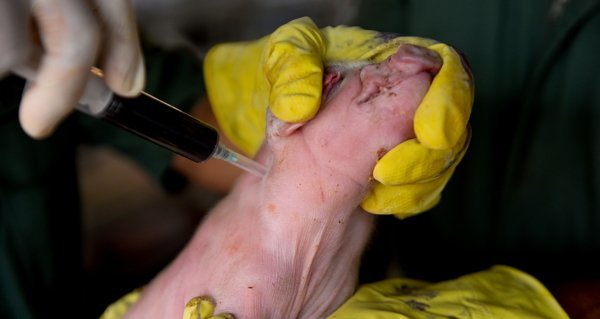

In the new study, Izpisua Belmonte’s team collaborated with Tao Tan of the Kunming University of Science and Technology in China and colleagues to tackle the challenge of evolutionary distance. In the past, researchers have had limited chimeric success, at least in part due to the evolutionary distance between humans and mouse or pig hosts, she adds.

but chimeric assays are not easy,” says Berna Sozen, a stem cell biologist at Yale University who was not involved in the study. “A precise confirmation of these cells’ developmental potency can only be achieved in vivo. The team grew the chimeras for up to 20 days in culture and found that up to 7 percent of the embryos’ cells can trace their lineage to the human EPS cells.ĮPS cells-generated by treating pluripotent stem cells with factors that help them both maintain pluripotency and contribute to embryonic and extraembryonic tissues-were developed by Juan Carlos Izpisua Belmonte, a stem cell biologist at the Salk Institute for Biological Studies, and colleagues in 2017. The scientists made the chimeras by injecting human extended pluripotent stem (EPS) cells-also known as expanded potential stem cells-into early embryos of cynomolgus monkeys ( Macaca fascicularis). In a study published today (April 15) in Cell, researchers describe their progress in producing a human-monkey chimeric embryo in an effort to determine whether having a more closely related host would allow the human cells to have a greater presence, thus paving the way for a better understanding of what cell types they can become and, possibly in the far future, a potential way to cope with the shortage of human organs available for transplant. In work published in 2017, for instance, human cells contributed up to 1 percent of embryonic cells in a human-mouse chimera. By tracking the outcomes of the human cells, they can discern how capable these cells are of differentiating into various cell types and contributing to the embryo. Researchers investigating how this complexity arises have made human-animal chimeric embryos by introducing human pluripotent stem cells into the embryos of other animals, such as mice and pigs. There are hundreds of different cell types that make up the human body, each derived from a single origin: the fertilized egg. WEIZHI JI, KUNMING UNIVERSITY OF SCIENCE AND TECHNOLOGY

The trophectoderm layer, which contains placental precursors, is labeled in green and gray. ABOVE: In this image of a nine-day-old human-monkey chimera, human EPS cells are labeled in red.


 0 kommentar(er)
0 kommentar(er)
